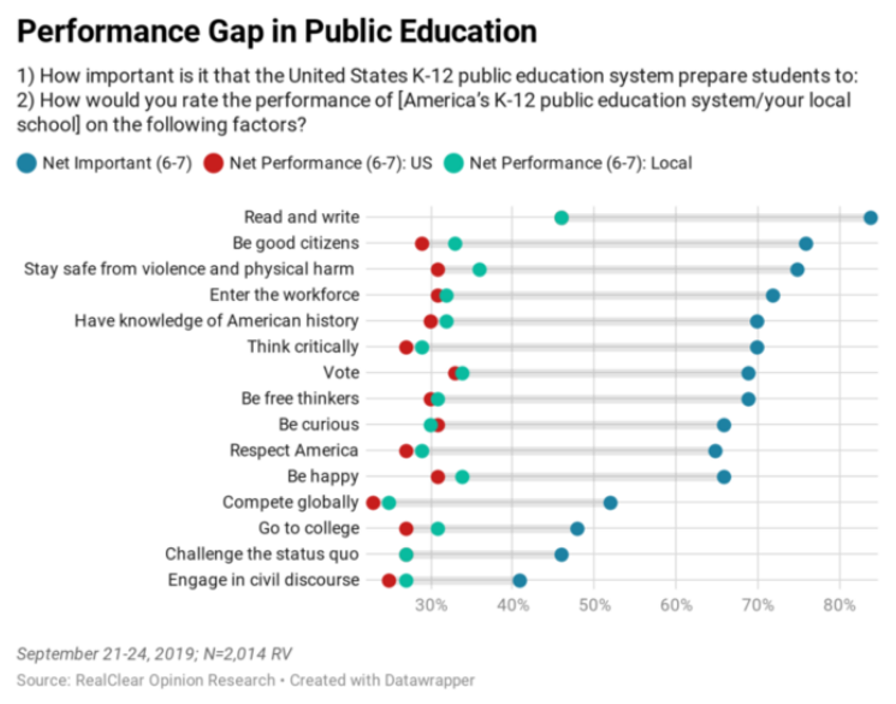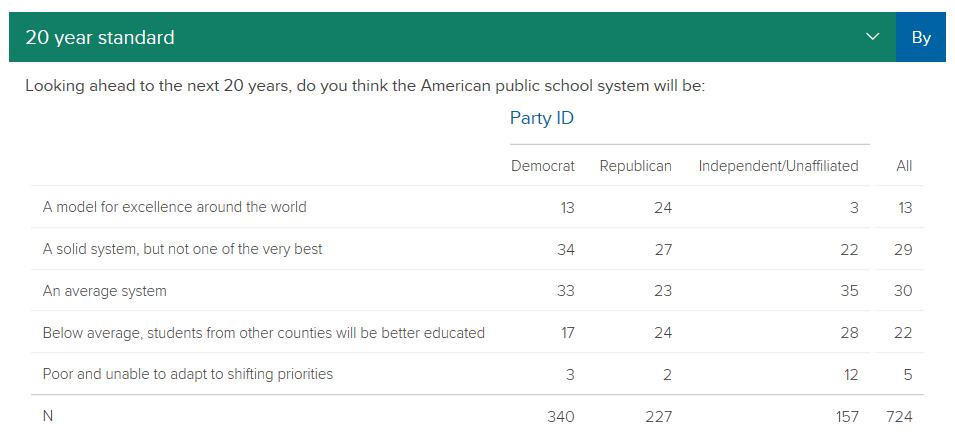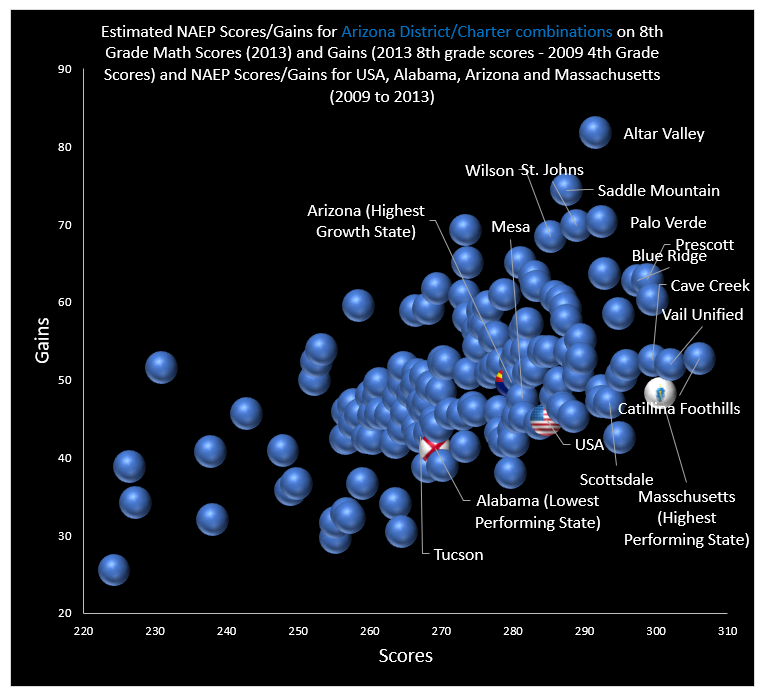
Only about one in 10 of those surveyed believe America’s K-12 education will be a model of excellence by 2040, according to a new poll from Real Clear Opinion Research.
A recent poll conducted by Real Clear Opinion Research shows that Americans don’t hold the country’s public education system in high regard. The poll drew responses from 2,014 registered voters on their views and expectations of K-12 education between Sept. 20-24.
This Real Clear Opinion infographic below summarizes many of the results.

Respondents were asked to rate the importance of 15 goals from reading and writing proficiency to engagement in civil discourse. Blue dots indicate how many rated the importance as either a 6 or 7 on a 7-point scale. Red dots indicate how the respondents think the overall public education system is highly performing on this measure. Green dots measure the perceived performance of local schools.
More than 75 percent of respondents think it is very important for the public education system to prepare students to be good citizens, but fewer than 30 percent think the national public education system is doing a good job producing good citizens (red dot) and only about 33 percent think their local system has a strong performance in producing strong citizens (green dot).
Respondents consistently rank the importance of the various goals as high but rank the performance of the public education system as low. Moreover, respondents don’t seem very optimistic about the public education system’s prospects for improvement. When asked to look 20 years ahead, most respondents expect a public education system that is average, below average or “poor and unable to adapt to shifting priorities.” Independent voters were considerably more pessimistic than either Democrats or Republicans:

Americans thus seem to see their public education system as falling short in a variety of ways and aren’t especially optimistic about future improvement. Republicans exhibited the greatest amount of optimism, with 24 percent forecasting that the American public school system would be a “model of excellence around the world” in 20 years. Only 13 percent of Democrats and 3 percent of Independents were similarly optimistic. You, as a regular RedefinED reader are more aware of looming challenges lying ahead in the next two decades than most.
Should we be optimistic or pessimistic about the future of public education? Mixed results across states seems like the most likely outcome and “a model of excellence around the world” is not as far off as it may sound.
Massachusetts, the highest scoring state on NAEP, compares well to Asian and European systems on international exams. Stanford scholar Sean F. Reardon’s new data source, for instance, equates state scores to NAEP. When I ran the numbers for my home state of Arizona, I found far more variation within my state than between states. I also, however, found several Arizona districts (and the charter schools operating within their boundaries) that compare favorably to the average performance in Massachusetts:

Some of this data is a decade old, which is good news, because Arizona’s statewide NAEP scores improved after this period. Many of the Arizona district/charter combos are relatively demographically advantaged compared to Arizona as a whole, but few are demographically advantaged compared to affluent states like Massachusetts or Vermont and receive substantially less funding per pupil.
The real problem here lies at the bottom left of the chart. Those district/charter combos didn’t just perform worse than the lowest-performing state; they were substantially below the lowest-performing state.
In short, I’m more optimistic about my green dot than my red dot. The 2019 NAEP data for reading and mathematics for states and select urban districts will be released Oct. 30. Let’s see what happens next.